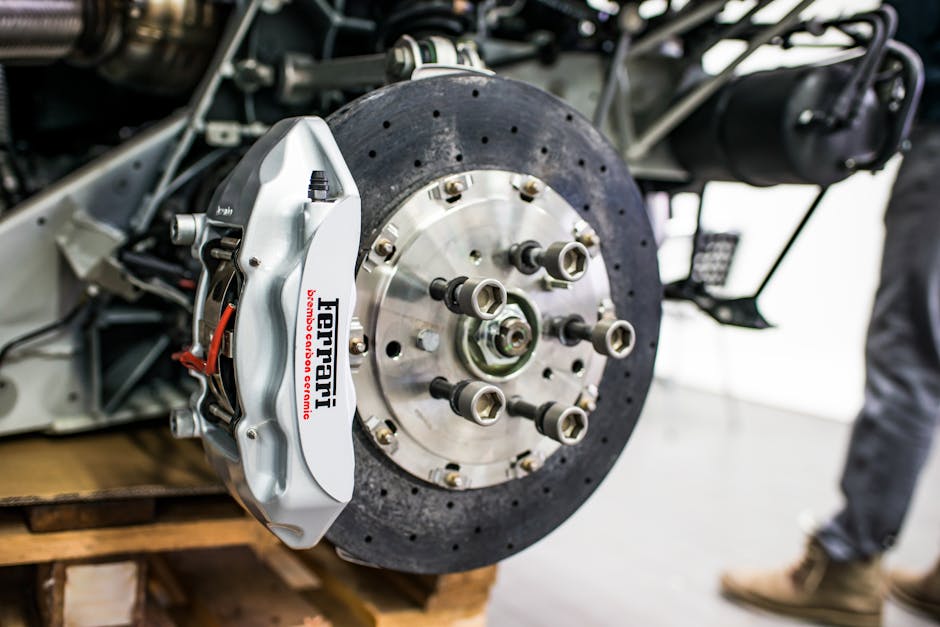Why Regular Brake Inspections are Crucial for Classic Cars

Classic cars are cherished possessions, often representing a blend of historical value and personal nostalgia. However, maintaining their pristine condition goes beyond just aesthetic care. Regular brake inspections are an essential aspect of ensuring these vintage vehicles remain safe and operational. Brake systems in classic cars can be more susceptible to wear and tear due to their age, making frequent checks crucial for preventing accidents and costly repairs.
Understanding the Brake System of Classic Cars
The brake system in classic cars typically differs from modern vehicles in terms of design and materials used. Classic cars often feature drum brakes rather than the disc brakes common in contemporary models. Drum brakes consist of brake shoes that press against the inside of a drum attached to the wheel, creating friction to slow down or stop the vehicle.
Over time, these components can degrade due to factors such as rust, heat, and general wear. This degradation can significantly impact braking efficiency and safety. For example, brake fluid in older systems may absorb moisture over time, leading to corrosion and reduced hydraulic pressure. Regular inspections help identify these issues before they become severe.
Additionally, classic car enthusiasts should be aware that replacement parts for older brake systems can be harder to find and more expensive. Maintaining the original components through regular checks and maintenance can save both time and money in the long run.
Signs That Your Classic Car’s Brakes Need Inspection
Recognizing when your classic car's brakes need attention is vital for maintaining safety. Some common signs include:
- Squeaking or Grinding Noises: Unusual sounds when braking can indicate worn brake pads or shoes.
- Reduced Braking Efficiency: If your car takes longer to stop or feels less responsive when braking, it’s a sign that an inspection is needed.
- Vibrations or Pulsations: Feeling vibrations through the brake pedal or steering wheel can signal warped drums or rotors.
- Fluid Leaks: Puddles of brake fluid under the car can indicate a leak in the hydraulic system.
Addressing these signs promptly through professional inspection and maintenance can prevent further damage and ensure your car remains safe to drive.
The Benefits of Professional Brake Inspections
While some car enthusiasts may have the skills to perform basic maintenance themselves, professional brake inspections offer several advantages:
- Expertise: Professional mechanics have the knowledge and tools to accurately diagnose issues that might be overlooked by amateurs.
- Safety: Ensuring that all aspects of the brake system are thoroughly checked reduces the risk of accidents caused by brake failure.
- Preservation of Value: Keeping your classic car in top condition through regular professional inspections helps maintain its value over time.
An experienced mechanic will not only inspect visible components but also test the entire system's performance under various conditions. This comprehensive approach ensures that any potential issues are identified and addressed promptly.
A Practical Guide to Scheduling Brake Inspections
The frequency of brake inspections can depend on several factors, including how often you drive your classic car and under what conditions. Here’s a practical guide to help you schedule inspections:
| Condition | Inspection Frequency |
|---|---|
| Regular Use (e.g., weekly drives) | Every 6 months |
| Sporadic Use (e.g., monthly drives) | Annually |
| Storage (e.g., rarely driven) | Before and after storage period |
If you participate in classic car shows or rallies, additional inspections before such events are advisable. High-performance driving places extra stress on brake systems, making pre-event checks critical for safety.
Another important consideration is environmental factors. Cars stored in humid climates may require more frequent inspections due to increased risk of rust and corrosion. Conversely, those stored in dry environments might not need checks as often but should still adhere to a regular schedule to prevent unexpected failures.
A proactive approach to brake maintenance not only enhances safety but also preserves the unique driving experience that classic cars offer. By integrating regular inspections into your routine, you can enjoy your vintage vehicle with peace of mind knowing it’s well-maintained and ready for the road.